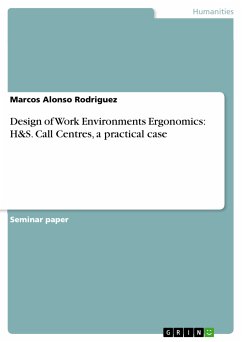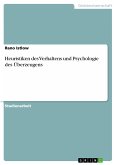Seminar paper from the year 2006 in the subject Psychology - Work, Business, Organisation, grade: 68, Aston University, course: Design of Work Environments Ergonomics: H&S - Organizational Psychology, language: English, abstract: Practical case submitted as term paper for the MSc in Work Psychology and Business The UK Call Centre industry has grown by almost 250% since the mid-90s, and it is expected to continue growing (DTI, 2004). By 2007 this industry will employ almost 1 million people in approximately 6,000 call centres (DTI, 2004). The banking and finance services are the business sector that runs the most of the Call Centres in the UK employing more than one quarter of the total call-handlers. This essay is structured as follows; firstly, definitions are given of what constitutes a Call Centre (CC) and what is a call-handler. Later, descriptions of the current working practices and general problems in the CC industry are explained, giving attention to Lloyds TSB CCs (LTSBCC) in particular. The second part of this essay begins with a description of the working practices in the Birmingham LTSBCC (BirmCC), giving special importance to the job design (variety, autonomy, and completeness) and the hygiene factors (Herzberg, 1966). Later a comparison between the BirmCC and other LTSBCCs are carried out in order to highlight the deficits of the BirmCC. Advice is also given regarding ergonomics issues. To conclude, recommendations and steps for their implementation are provided.
Dieser Download kann aus rechtlichen Gründen nur mit Rechnungsadresse in A, B, BG, CY, CZ, D, DK, EW, E, FIN, F, GR, HR, H, IRL, I, LT, L, LR, M, NL, PL, P, R, S, SLO, SK ausgeliefert werden.









